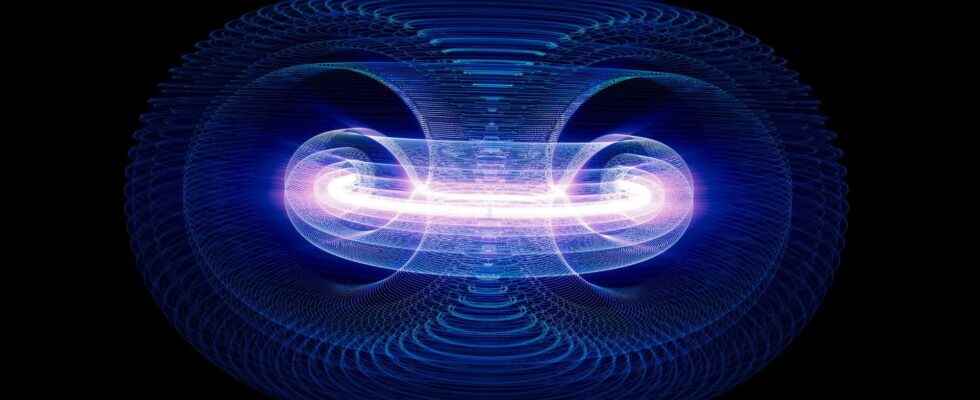Researchers at the Variable Configuration Tokamak in Switzerland turned to DeepMind, a company specializing in artificial intelligence. Using a specially trained AI to automatically configure the magnetic fields allows them to test different forms of plasma.
You may also be interested
[EN VIDÉO] Interview: how was artificial intelligence born? Artificial intelligence aims to mimic the functioning of the human brain, or at least its logic when it comes to making decisions. Jean-Claude Heudin, director of the research laboratory of the IIM (Internet and Multimedia Institute), explains the origin of this research.
The nuclear fusion could one day meet the energy needs of humanity, by supplying large quantities of clean electricity. However, the development of this technology still faces many obstacles. From atoms ofhydrogen are heated to extremely high temperatures to create a plasma, which should release a lot ofenergy.
One of the problems is figuring out how to keep this plasma at a higher temperature than the surface of the Sun long enough to extract electricity from it. This is where comes in DeepMind, a sister company of Google, specializing in artificial intelligence. In an article published in the journal Naturethe firm has partnered with Swiss Plasma Center to create an artificial intelligence (AI) specializing in the nuclear fusion.
An AI to test different forms of plasma
To contain the reaction, scientists use generator coils of magnetic fields. They must be perfectly calibrated to obtain the desired shape and to ensure that the plasma does not touch the walls of the reactor. To test other configurations to improve the reaction, it is necessary to recalibrate everything, which is a very complex and time-consuming task.
DeepMind AI was designed to automatically recalibrate the 19 magnetic coils inside the Variable Configuration Tokamak (TCV) in Switzerland. It is a deep reinforcement learning system based on a neural network. The AI was first trained in a simulation by observing how each of the coils affects the shape of the plasma. She then had to attempt to calibrate the coils to recreate specific shapes.
Two plasmas stable for 200 milliseconds
The artificial intelligence managed to correctly reproduce several shapes including a D-shaped cross-section, similar to that which will be used in the International Thermonuclear Experimental Reactor (Iter) in construction in the department of Bouches-du-Rhône and whose start-up is planned for 2025. The scientists then validated the results of the simulation by testing the configurations directly in the TCV.
AI has allowed researchers to test new forms of plasma, including “droplets”, where two distinct plasmas exist within the Tokamak simultaneously. The system managed to stabilize them during the 200 milliseconds of the test. The nuclear fusion represents a significant challenge for AI, which is more often used for well-defined tasks, such as image processingor turn-based like for games. Here, the system had to manage a continuous flow but which cannot be measured continuously.
The results of this collaboration could influence the design of future tokamaks, or even accelerate the development of a viable fusion reactor. It remains to be seen whether the AI will be able to achieve similar results on larger tokamaks.
Interested in what you just read?
